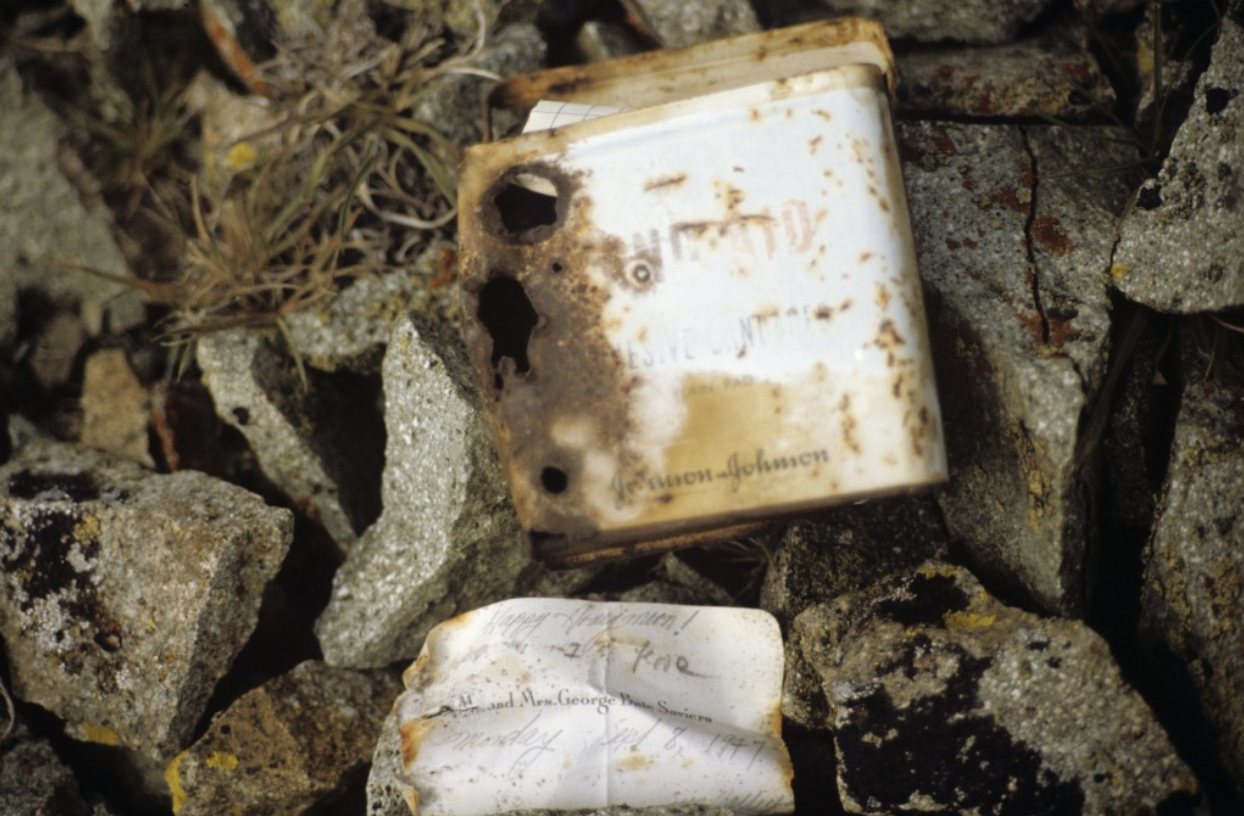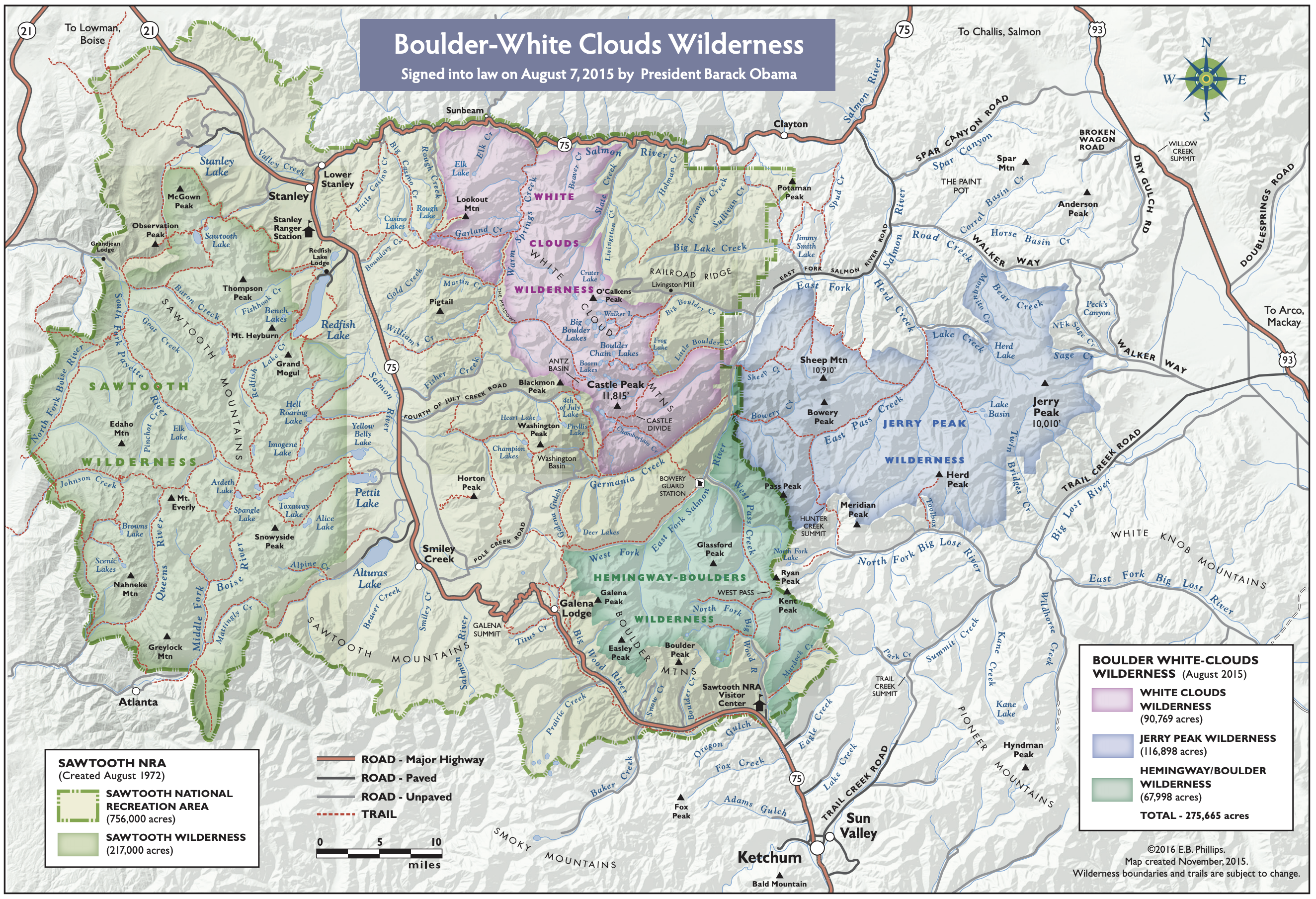Many first-time visitors have come to the SNRA only to be left scratching their heads when trying to figure out which mountain ranges are where and what exactly makes up the Sawtooth National Recreation Area. Following is a brief overview of the protected areas, mountains, and peaks that make up this vast Idaho wilderness.
The Sawtooth Range is a mountain range of the Rocky Mountains.
The Sawtooth National Recreation Area (SNRA) consists of 756,000 acres of scenic mountain country and includes over 700 miles of trails, 40 peaks rising more than 10,000 feet, and more than 300 high mountain lakes. It contains the wilderness areas of the Hemingway-Boulders Wilderness, Sawtooth Wilderness, and the Cecil D. Andrus-White Clouds Wilderness.
Wilderness areas
The Hemingway-Boulders Wilderness has 67,998 acres of protected land within the SNRA and is managed by the US Forest Service.
The Sawtooth Wilderness Area/The Sawtooth National Forest- Is a federally-protected wilderness area that covers 217,088 acres, and is part of the National Wilderness Preservation System. The NWPS restricts human use and development and is an area where people are to remain only visitors.
The Cecil D. Andrus-White Clouds Wilderness is part of the SNRA and covers 90,769 acres of protected land. THE SNRA manages the majority of the wilderness, with 450 acres managed by the BLM along the east fork of the Salmon River.
Mountain ranges
Mountain ranges within the SNRA include the Smoky, Pioneers, Soldier, Boulders, and the Sawtooth Mountains.
The Smoky Mountains were named after the frequent forest fires in the mountains. The highest peak in the Smoky Mountains is Saviers Peak. Named after Mr. and Mrs. George Saviers who climbed the peak while on their honeymoon in 1947. Climbers later adopted the Saviers name for the peak. The popular ski destination Bald Mountain – or “Baldy” is part of this mountain range.

The summit register was found in 1987 and left by Mr. and Mrs. George Saviers who climbed the peak on their honeymoon.-Photo courtesy of Tom Lopez, www.idahoclimbingguide.com
The Pioneers were named after the pioneer settlers of the region. The highest peak in the Pioneers is Hyndman Peak, at an elevation of 12,012 feet, it is the ninth highest peak in Idaho. Hyndman Peak was named after Major William Hyndman, an early settler, and businessperson in the local mining industry.
Soldier Mountains- The highest point in the range is Smoky Dome at an elevation of 10,095 feet. The mountains are located within Sawtooth National Forest north of Fairfield, ID. The Soldier Mountain Ski Area is located within the range to the east of Smoky Dome.
The Boulder Mountains- Located in central Idaho, stretch a few miles north of Ketchum towards Challis, and is part of the range within the SNRA and partially within the Hemingway–Boulders Wilderness
The Sawtooth Mountains- Much of the Sawtooth Mountain range is within the Sawtooth Wilderness, part of the SNRA, and Sawtooth National Forest. It encompasses an area of 678 square miles.
The spectacular peaks of the SNRA
Castle Peak- The largest in the SNRA and located within the White Cloud Mountains has an elevation of 11,815 feet. It is one of the more challenging peaks for experienced climbers.
Thompson peak is the largest in the Sawtooth Wilderness area. It reaches an elevation of 10,751 feet at its summit and is named after John Thompson, one of the first ranchers and homesteaders in the area. John had a 160-acre ranch in the Valley where he settled in the late 1800s. His wife, Josephine, lived to be 99 and was laid to rest next to her husband in the Hailey cemetery in 1974.
The highest point in the Boulder Wilderness range is Ryan Peak, at an elevation of 11,714 feet. The peak is named after Mike Ryan, an early Wood River Teamster (one who drove a team- usually of oxen, horses, or mules pulling a wagon). Many people mistake Kent for Ryan when viewed from the Wood River Valley – Ryan sits behind Kent.




